Three large conducting sheets placed parallel to each other at a finite distance contain charges Q,−2Q,and3Q, respectively. Find the electric fields at points A, B, C, and D.
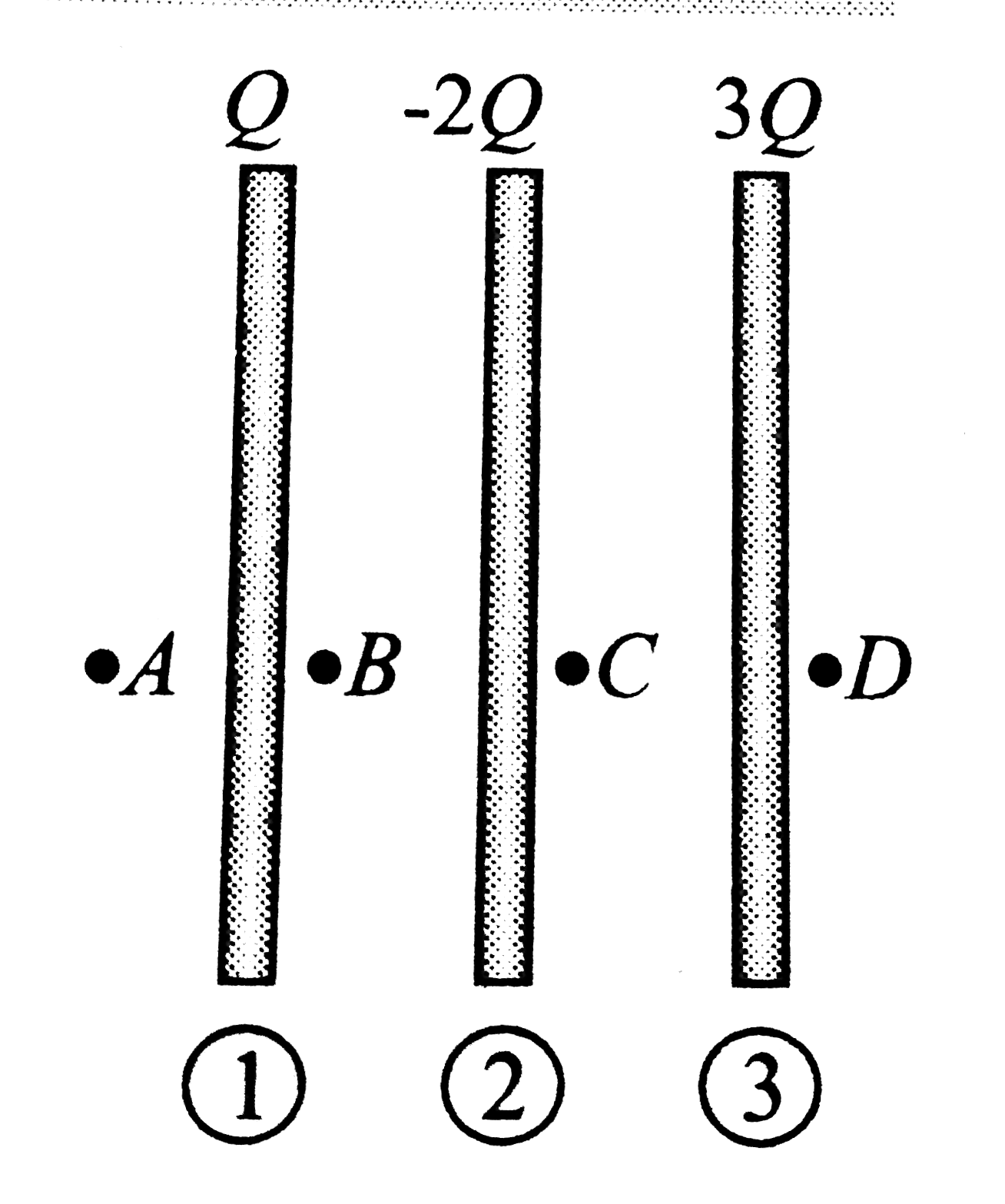
i. Electric field at A is
→EA=→E1+→E2+→E3
→E1↔→E2
→E3←
∴→E1=Q2ε0A(−ˆi),→E2=2Q2ε0A(ˆi),and→E3=3Q2ε0A(−ˆi)
∴→EA=−Q+2Q−3Q2ε0A(ˆi)=QAε0(−ˆi)
or EA=QAε0 (toward left)
ii. Electric field at B is
→EB=→E1+→E2+→E3
→E3↔→E1
→→E2
∴→E1=Q2ε0A(ˆi),→E2=2Q2ε0A(ˆi),and→E3=3Q2ε0A(−ˆi)
∴→EB=Q+2Q−3Q2ε0A(ˆi)=0
iii. Electric field at C is
→EC=→E1+→E2+→E3
→E2↔→E1 →E3←
∴→E1=Q2ε0A(ˆi),→E2=2Q2ε0A(−ˆi),and→E3=3Q2ε0A(−ˆi)
∴→EC=Q−2Q−3Q2ε0A(ˆi)=2QAε0(−ˆi)
or EC=2QAε0 (toward left)
iv. Electric field at D is
→ED=→E1+→E2+→E3
→E2↔→E1
→→E3
∴→E1=Q2ε0A(ˆi),→E2=2Q2ε0A(−ˆi),and→E3=3Q2ε0A(ˆi)
∴→ED=Q−2Q+3Q2ε0A(ˆi)=Qε0A(ˆi)
or ED=QAε0 (toward right).
Topper's Solved these Questions
- BOOK - CENGAGE PHYSICS ENGLISHCHAPTER - ELECTRIC FLUX AND GAUSS LAWEXERCISE - Example7videos
ELECTRIC FLUX AND GAUSS LAW
- BOOK - CENGAGE PHYSICS ENGLISHCHAPTER - ELECTRIC FLUX AND GAUSS LAWEXERCISE - Exercise 2.116videos
ELECTRIC FLUX AND GAUSS LAW
- BOOK - CENGAGE PHYSICS ENGLISHCHAPTER - ELECTRIC CURRENT AND CIRCUITEXERCISE - Interger8videos
ELECTRIC CURRENT AND CIRCUIT
- BOOK - CENGAGE PHYSICS ENGLISHCHAPTER - ELECTRIC POTENTIALEXERCISE - DPP 3.515videos
ELECTRIC POTENTIAL
Similar Questions
Two large parallel conducting sheets (placed at finite distance) are given charges Q and 2Q respectively. Find out charges appearing on all the surfaces.
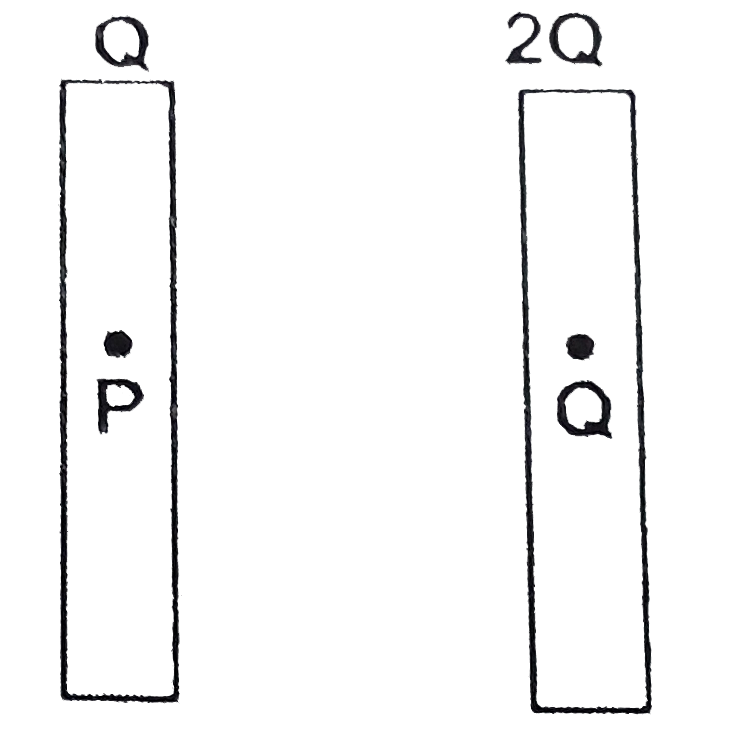 View Solution
View SolutionTwo large conducting plates of a parallel plate capacitor are given charges Q and 3Q respectively. If the electric field in the region between the plates is E0 , then the force of interaction between the plates is
 View Solution
View SolutionThree concentric conducting spherical shells of radii R, R2 and 3R carry charges Q,-2Q and 3Q, respectively compute the electric field at r=52R
 View Solution
View SolutionThree concentric conducting spherical shells of radii R,2R carry charges Q, -2Q and 3Q, respectively. Find the electric potential at r = R and at r = 3 R, where r is the radii distance from the centre.
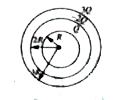 View Solution
View SolutionTwo point charges q and –q are at positions (0,0,d) and (0,0, –d) respectively . What is the electric field at (a,0,0 ) ?
View SolutionTwo point charges q and –q are at positions (0,0,d) and (0,0, –d) respectively . What is the electric field at (a,0,0 ) ?
View SolutionA charge +Q at A as shown produces electric field E and electric potential V at D. If we now put charges −3Q and +Q at B and C, respectively, then the electric field and potential at D will be
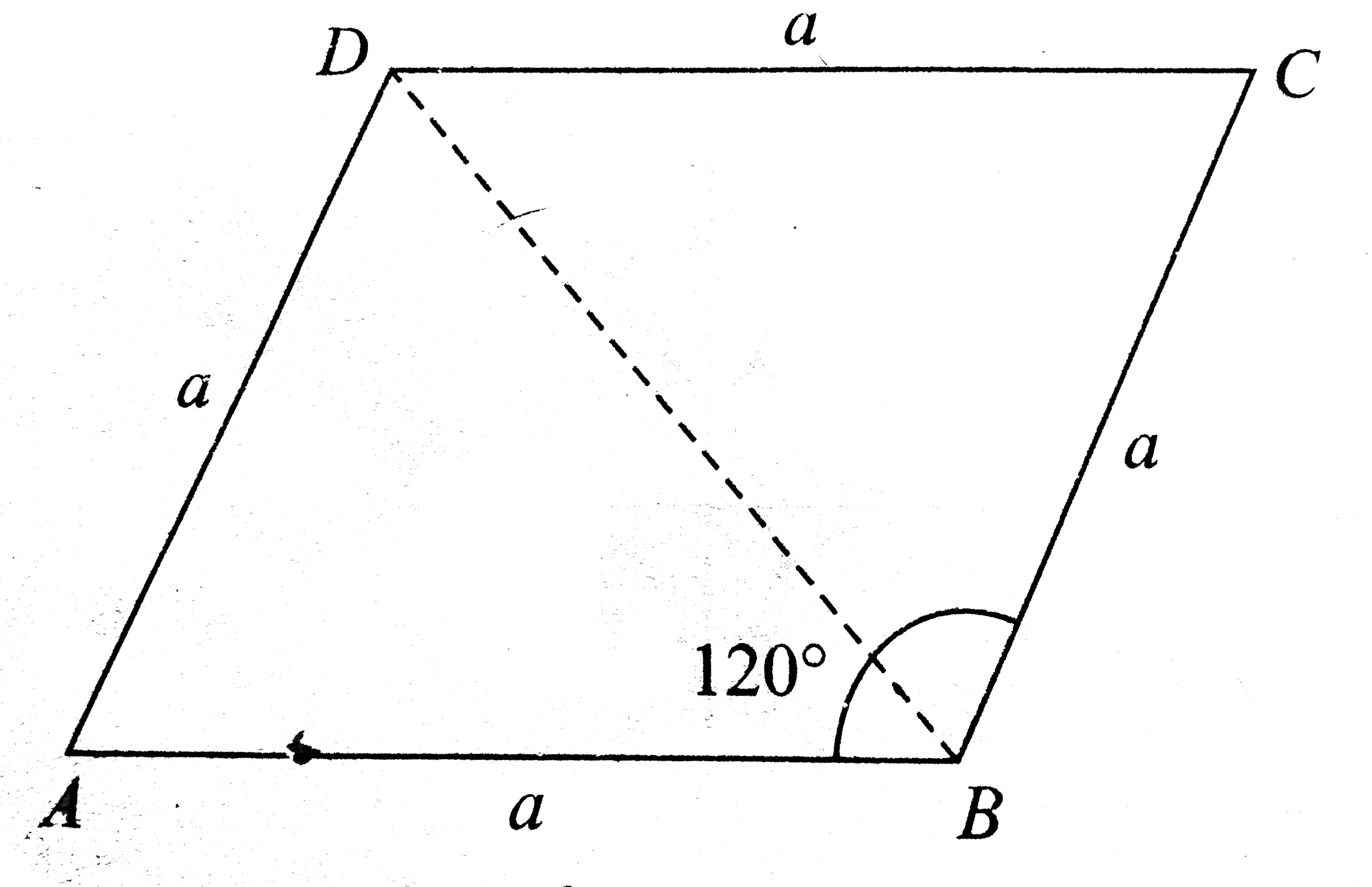 .View Solution
.View SolutionTwo conducting plates A and B are placed parallel to each other. A is given a charge. Q1 and B a charge Q2. Find the distribution of charges on the four surface.
View SolutionFour initially uncharaged thin, large, plane idential metallic plates A,B,C and D are arranged parallel to each other as shown. Now plates A,B,C and D are given charges Q,2Q,3Q and 4Q respectively. Plates A and D are connected by a mtallic wire while plates B and C connected by other metallic wire then after Electrostatic equilibrium is reached.
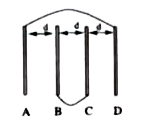
Total charge on plates after earthing plates A and B will beView SolutionFour initially uncharaged thin, large, plane idential metallic plates A,B,C and D are arranged parallel to each other as shown. Now plates A,B,C and D are given charges Q,2Q,3Q and 4Q respectively. Plates A and D are connected by a mtallic wire while plates B and C connected by other metallic wire then after Electrostatic equilibrium is reached.

Total charge on plates after earthing plates A and B will beView Solution

